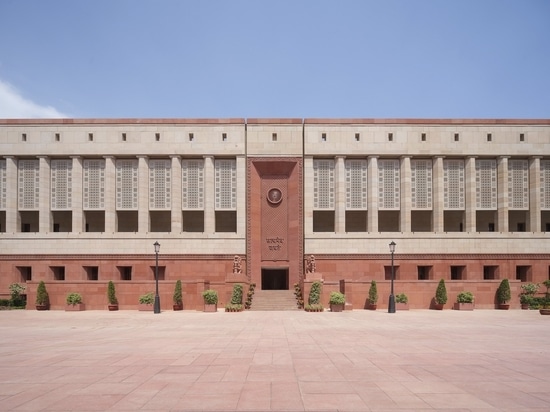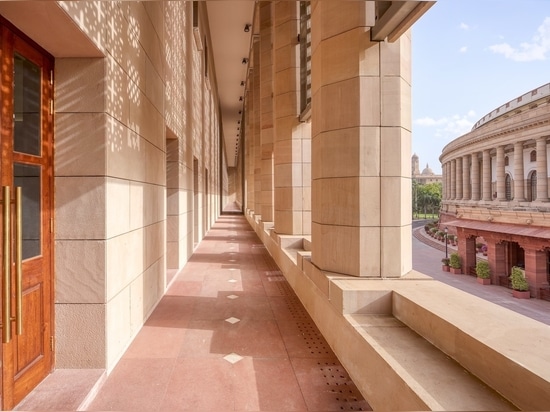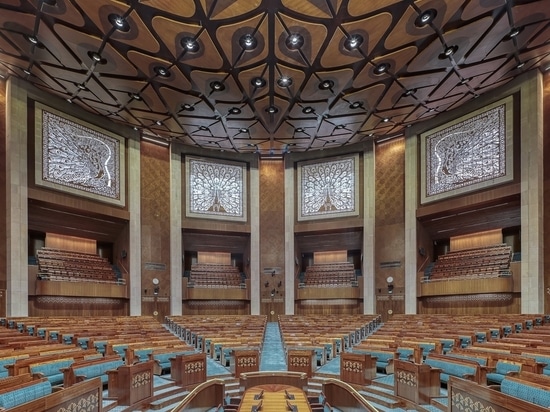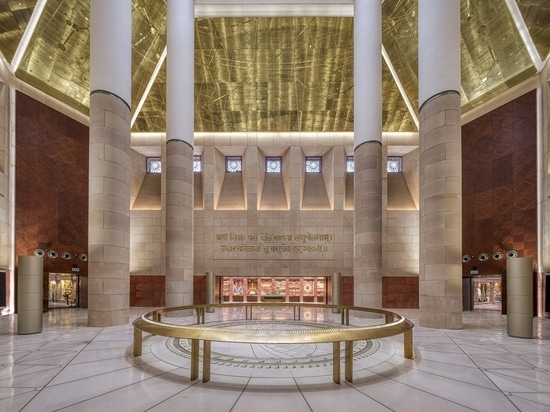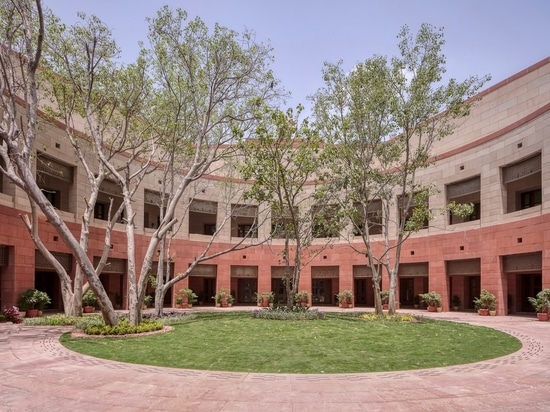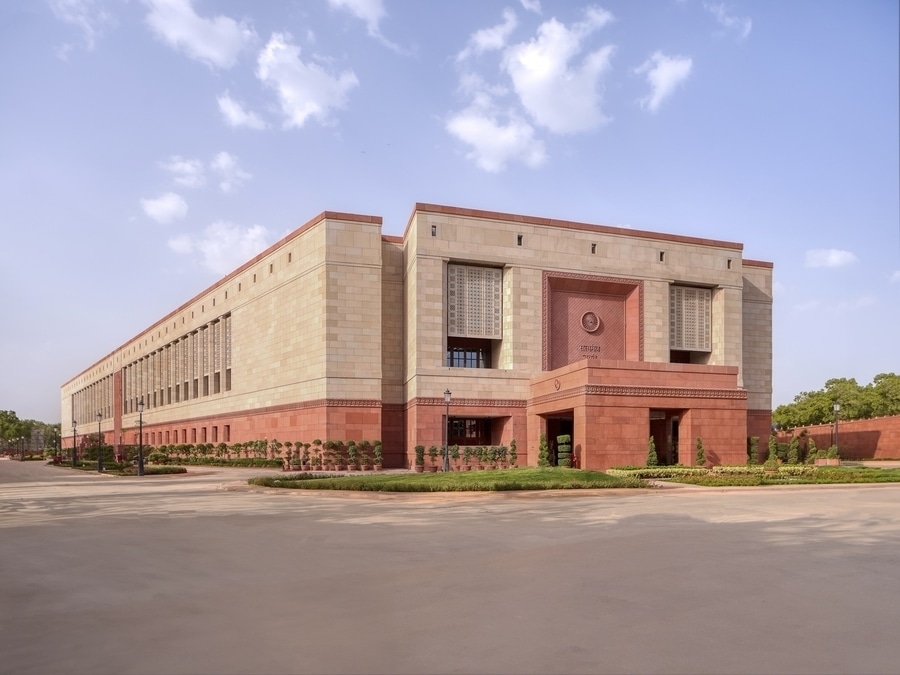
#COMMERCIAL ARCHITECTURE PROJECTS
New Building for the Parliament of India / HCP Design, Planning and Management
The new building for the Parliament of India is the first purpose-designed Parliament building for India. The design addresses the present and future needs of efficient Parliamentary functioning.
The building is located on a triangular plot therefore, a triangular building allows for the most efficient use of available space. The trinity of functions – Lok Sabha (the Lower House), Rajya Sabha (the Upper House), and Central Lounge – also work efficiently within the triangular plan.
The design is inspired by the present Parliament building, the construction crafts of India, India’s national symbols, and the other buildings at Central Vista. The exterior, for example, uses sandstone of two colors and harmonizes the building with its historic neighbor. Sandstone jalis inspired by the architectural crafts of India shade the first-floor verandahs while decorative jalis in the interiors allow natural light to illuminate the spaces. Carved bands along the plinth and at the thresholds at all entrances also pay tribute to traditional Indian architectural elements.
In the interior, the use of national symbols and motifs gives identity and unifies a diverse population. The Lok Sabha Chamber carries the green color scheme of the present building forward and uses the forms and motifs of the national bird, the peacock. The Rajya Sabha chamber continues the red color scheme and uses the motif of the national flower, the lotus. The courtyard is planted with a Banyan tree, the national tree. The jalis along the corridor that encircle the courtyard represent trees from all parts of India.
Along with essential facilities like committee rooms, major offices of the Ministry of Parliamentary Affairs, Lok Sabha Secretariat, and Rajya Sabha Secretariat, the building also includes publicly accessible museum-grade galleries and exhibits. The centrally placed Constitution Hall and Gallery showcase the Indian Constitution and other artifacts of India’s heritage for public viewing - symbolically and physically putting people at the heart of the Indian democracy.
Three artistic elements at the center of the Constitution Hall connect the date and time of the formation of the republic with the cosmos and the location of Delhi on 26th January 1950. A Foucault's Pendulum is suspended from the ceiling of the Constitution Hall. The movement of the pendulum with respect to the rotation of the Earth symbolizes the passage of time. Its path is marked with brass inlay work on the floor depicting Delhi’s location within the cosmos, and the cardinal points. A large skylight at the top is framed by decorative ceiling panels that show an artistic representation of the night sky of 26 January 1950. High above this space, sits India’s National Emblem, an adaptation from the Sarnath lion capital of Ashoka.
The design incorporates state-of-the-art infrastructure and technology to assist Parliamentary functions. Furniture in the halls includes smart displays and biometrics for ease of voting. The new building for the Parliament will work in conjunction with the existing building. The new building is a modern structure that incorporates the latest technology in design and construction while being respectful and harmonious with its surroundings.
